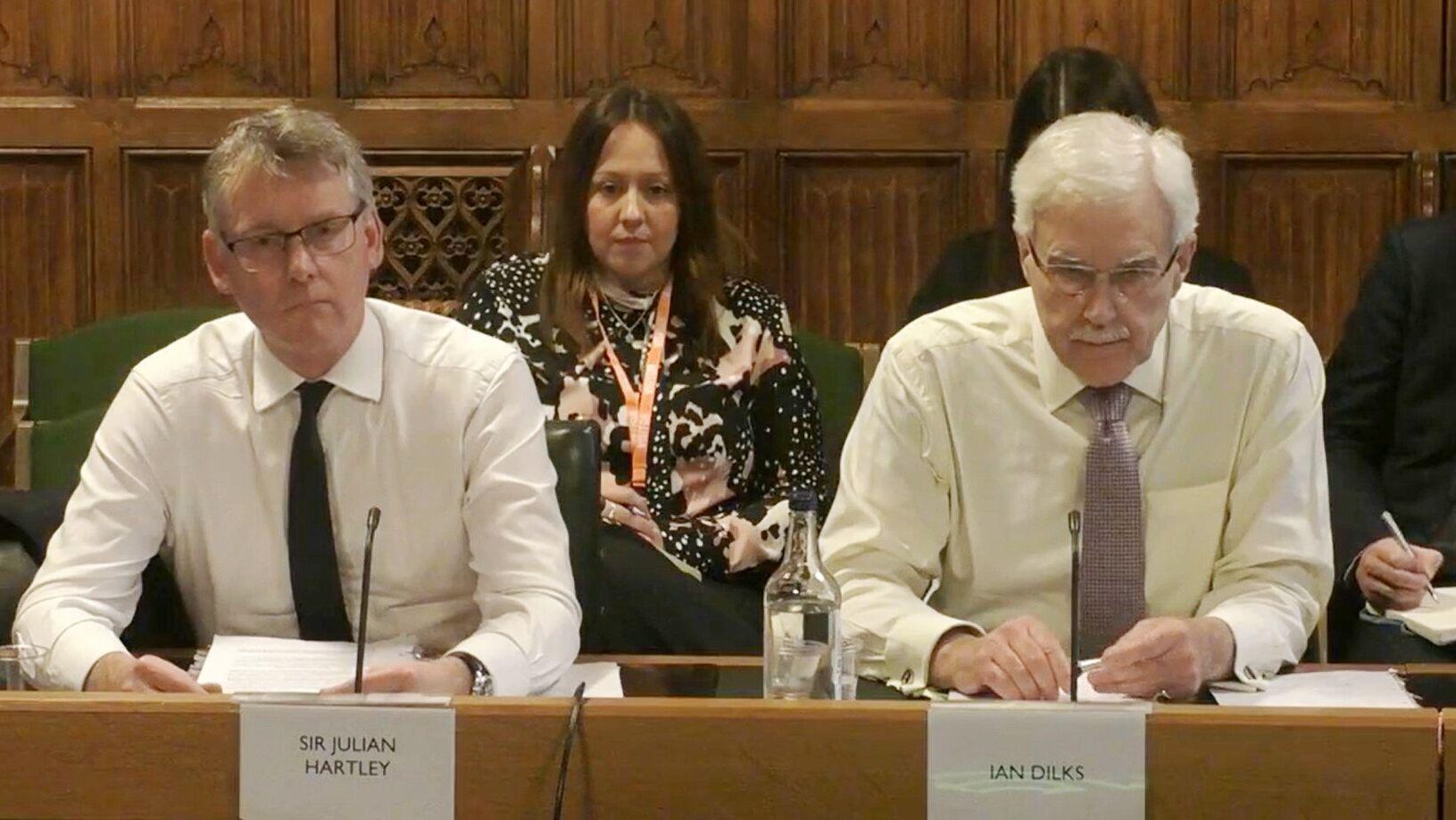Pots and plans: changes to NHS pensions schemes
Despite recent tax changes and legal doubts hanging over improvements to the scheme, the NHS pension scheme remains one of the best on offer. MiP reports on recent developments, and explains how to keep your retirement plans on track.

Many of us only think about our pensions in our 50s, as retirement looms and we ask what we will have to live on. For many in the NHS, the answer used to feel reassuring – after all, the NHS Pension Scheme was supposed to be one of the best around.
But in recent months NHS pensions have hit the headlines as punitive tax demands related to pension allowances land on doctors’ doormats. Less well reported is that many managers have been hit by similar demands. “The concern is that it is affecting behaviours,” says MiP national officer Zohra Francis, who has spoken to several managers affected. “Rather than accepting a promotion they are having to turn that down because that increase will be swallowed up by an increased tax bill.”
Tales of brown envelopes containing demands for tens of thousands of pounds are the result of the Byzantine way the government calculates whether your annual allowance – the tax-free amount you can add to your pension pot each year – has been exceeded. Most people will have an annual allowance of £40,000, but high earners may have as little as £10,000.
Tax allowance changes
NHS Employers chief executive Danny Mortimer has warned of “mounting concern” among employers over the impact of tax allowances – particularly the tapered annual allowance. People with taxable incomes of over £110,000 (excluding pension contributions) will have their annual allowance reduced – and it can be very hard to spot in advance exactly how this will affect you.
Managers with incomes at this level should be aware of the risks of exceeding their annual allowances, says Alan Fox, Unison’s national pensions officer. In 2016-17, 35,000 members of the pension scheme breached their annual allowance, and 2,360 breached the £1m lifetime allowance; and these numbers are only going in one direction.
Promotions which lead to large pay increases can also land managers with unexpected tax bills – even if they still have the full £40,000 allowance. This is much more likely to affect managers who have protected rights in the 2008 or 1995 parts of the NHS pension scheme, where pension rights are related to your final salary rather than a career average.
Despite widespread concern about the impact on the NHS workforce, the Treasury is reluctant to increase the allowances or make changes to the way the ‘taper’ operates. The new rules apply to every pension scheme, not just the NHS one, making any changes expensive.
Proposed opt-out reforms
A more fruitful way of reducing the impact on NHS staff may be to pursue changes to the NHS scheme, which seen as unusually inflexible, even compared with other public sector schemes.
MiP and NHS Employers, who both have seats on the NHS Pension Scheme advisory board, are working on a number of proposed improvements to the scheme, following a recent valuation which found that members were contributing 3.2% more than necessary to meet the scheme’s future obligations.
One proposal is to allow scheme members to opt out of pension contributions on some of their NHS income – at the moment you have be fully in, or fully out. The local government scheme, for example, allows a temporary opt-out for half of a members’ income. Such a partial opt-out could benefit both higher-paid members trying to remain within their annual allowances, and younger people struggling to live on their income and contribute to a pension. Both groups would, of course, have to accept reductions in their eventual pension rights.
Contribution rates and cliff edges
MiP and NHS Employers are also pressing for changes to contribution rates for the 40% of NHS staff who work part-time, which are currently based on full-time pensionable pay.
For example, someone who works half-time and earns £14,000 pays contributions at 9.3% per cent – the rate applicable to a full-time salary of £28,000. But someone working full-time on £14,000 would be charged just 5%. Fox says as many as 380,000 NHS Pension Scheme members would pay a lower rate if this change was introduced.
Finally, unions and employers want to look at the ‘cliff edges’ in the NHS scheme – where members getting a pay rise or a promotion move to a new, higher contribution rate which is payable for the whole of their NHS income. This can mean that people getting a small pay increase actually end up worse off because of higher pension contributions.
Appeal court ruling
However, before the government could fully consider these proposals, the courts threw a big spanner into the works. In January, the Court of Appeal ruled that new pension schemes set up in 2015 for firefighters and judges were discriminatory, because they gave older members transitional benefits not available to younger colleagues in the same scheme. The government is currently seeking leave to appeal to the Supreme Court.
Many other public sector schemes have similar provisions – including the NHS scheme, where some members who belonged to the 1995 and 2008 schemes are benefiting from transitional protection. “We want to see what happens in these cases and what the implications are for other pension schemes,” says MiP chief executive Jon Restell. “We want individual schemes to have a discussion about what the consequences are, rather than a pan-government approach.”
Levelling up – by offering all members of the earlier schemes the same transitional benefits – could be costly for the government: the Office for Budget Responsibility has said the ruling poses a “longer-term fiscal risk” and notes that schemes have made provisions of £29.5bn to meet this potential increase in liabilities.
Around 300,000 members of the NHS scheme already benefit from transitional protection, including 90% of those who have rights under the 1995 scheme, and some members of the 2008 scheme (basically, anyone with a retirement date before 2025 is likely to have some protection).
Future headaches
Unison national officer Colm Porter, who also sits on the NHS pensions advisory board, says members of the 2008 scheme who were born after about 1960 are most likely to benefit if the government is forced to extend transitional protection. They may, at best, have partial protection at the moment. Some may have left the NHS, but there will still be hundreds of thousands of NHS staff in this position.
If the government loses its appeal, the shape of any compensation deal remains unclear, but it could make it less likely that ministers will agree to other improvements to the scheme. And if large numbers of high earners – who pay a great deal into the NHS pension scheme – choose to opt out, the scheme will have even more of a long-term headache. The next few years could be a testing time for NHS pensions.
You can find further information on NHS pensions at the NHSBSA website, where you can estimate your pension.
More detailed explanations are available on gov.uk of the tax treatment of pensions
What should you do about your NHS pension?
1. Don’t panic
Don’t even think about withdrawing from the scheme without taking advice: most members will be better off staying in the NHS scheme, and many of the 245,561 people who opted out between 2015 and 2017 are likely to have lost out on a valuable asset. “It is still a pension scheme that most people outside the NHS would kill for,” says Jon Restell.
2. Count the benefits
If you are in the pension scheme your employer will be putting in over 20% of your salary at no cost to you. If you leave or don’t join, you don’t get that money. You will also lose the death-in-service and ill-health retirement benefits.
3. Consider your tax options
There is a real risk some managers will receive tax bills for exceeding the annual allowance – and it’s hard to know in advance if this is likely to happen. If it does, you have two main options:
- “Scheme pays” allows the tax charge to be deducted from your pension; you don’t have to pay the money up front but the charge – and the interest it then accumulates – reduces your eventual pension pot.
- Pay the money upfront and avoid reductions to your pension pot. There is anecdotal evidence that some doctors have remortgaged their houses to do this. Take specialist advice at an early stage to avoid tax charges.
4. Monitor your contributions
The risk of inadvertently exceeding allowances means you should keep a close eye on your contributions. Remember, as well as the annual allowances, there is lifetime allowance for pension contributions, currently set at £1.055m.
5. Check your pension statements
You can check your pension position online through your total rewards statements. These are available at the end of August – but they only show the position at the end of the previous financial year. To see your statements, register at the NHS Pensions Member Hub: nhsbsa.nhs.uk/member-hub.
Your Pension: what you need to know
- The NHS pension scheme is what is known as a “defined benefits” scheme, paying retired members an index-linked amount for the rest of their lives. Most private sector workers have a “defined contribution” scheme, where they build up a pot of money for their retirement but do not have a guaranteed income.
- Under the 2015 NHS scheme, your pension is based on a career average of your pensionable pay and how long they have paid into the NHS scheme. Earlier schemes offered a pension based on your final salary at time of retirement.
- Pension contributions are based on your NHS income, increasing from 5% of pre-tax pay to 14.5% as your pay increases. NHS employers also make a contribution which has just increased from 14.3% to 20.6% of pensionable pay.
- Under the 2015 scheme, pensions are paid out in two ways: an optional tax-free lump sum, and an annual pension. Taking a lump sum will reduce your annual pension you get. If you die, either in service or after retirement, any surviving spouse or partner will be entitled to a pension. Provisions are slightly different for those still in the 2008 or 1995 schemes.
- The lifetime allowance limits the size of a pension pot on which you can get tax relief on contributions. For 2019-20, the allowance is £1.055m and covers all pensions – so if you have a pension from another employer you need to consider that as well. If you exceed the allowance, you can face substantial tax demands related to your pension entitlements. If your pension pot was worth more than £1m when the allowance was reduced, you may still be able to “protect” it and benefit from a higher allowance.
- The NHS pension scheme is administered together for England and Wales, but separately in Northern Ireland and Scotland.
“Why I’m playing pensions ‘hokey-cokey’”
One member explains how pension tax bills lead him to ask for a salary reduction and eventually forced him out of the NHS scheme.
“I was appointed as an NHS chief executive at a relatively young age and did not expect to have pension issues – I’m nowhere near the lifetime allowance. But my predecessor warned me that they had hit the annual allowance and had to pay a large tax bill.
“I took specialist advice and, when I was offered an interim post, I asked to be paid less than was offered because I risked a £40,000 tax bill if I was paid the full amount. When I started this job, I opted out of the pension scheme. I’m now working out a strategy for when I should be in and when out – the pension ‘hokey-cokey’. But I’ve still had to pay £8,000 in unexpected tax bills over the last three years.
“The system seems to penalise those who are promoted rapidly. I nearly turned down the chief executive’s job because of it and I have clinical directors who are resigning due to it. It’s actively discouraging the development of clinical leadership. And people need specialist advice, which is not cheap.
“But there are other effects. As I’m out of the pension scheme, I’ve lost other benefits such as ill health retirement and death in service cover. That’s not good for myself and my family.”
Related News
-

Regulating the managers: more questions than answers
The Labour government’s plans for regulating NHS managers are still shrouded in mystery, and the three options on the table each have their pros and cons. Rhys McKenzie weighs up the choices and gauges the views of MiP members on the best way forward.
-

The inspector falls: why the CQC needs a fresh start
After years of chaos, the Care Quality Commission urgently needs to rebuild trust and credibility with the public and the services it regulates. What needs to change and what are the priorities for new boss Sir Julian Hartley? Alison Moore reports.
-

Voice, value and vision: what analysts need from the NHS
Data analysts play a vital role in an NHS which is increasingly data-driven and focused on public health trends. But the NHS faces fierce competition for skilled analysts and many feel the health service fails to value them or fully use their talents. Alison Moore reports.
